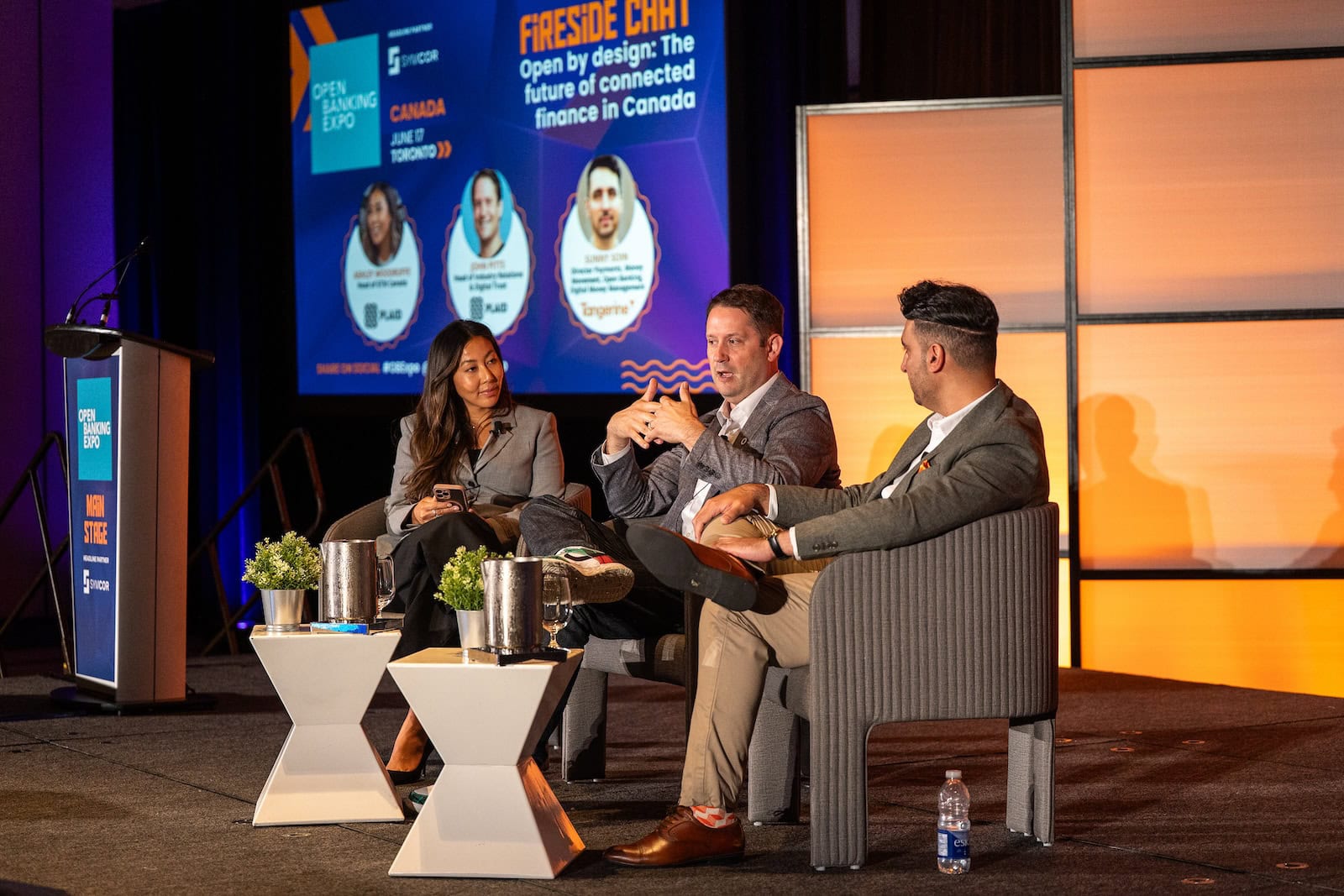The Canadian Open Banking ecosystem has an “obligation” to think about solving consumers’ pain points, and to avoid the pitfall of trying to “force” technology into a customer journey, according to speakers from Plaid and Tangerine at Open Banking Expo Canada 2025.
John Pitts, head of industry relations and digital trust at Plaid, told delegates: “If you survey Canadian consumers, do you want Open Banking? That’s an abstract concept. It is not a problem that a consumer experiences in their life.
“If you ask them, do you want to be able to instantly open a Tangerine account from your phone and fund it? The answer is, yes.
I think the obligation… is thinking about where are the pain points of the consumer that we are solving, [and] not, what are the conceptual ways that we practitioners think about the framework for that solution.”
Pitts was speaking during a Fireside Chat ‘Open by design: The future of connected finance in Canada’, with Sunny Soin, director payments, money movement, Open Banking, digital money management at Tangerine.
Moderator Ashley Woodroffe, head of GTM Canada at Plaid, asked Pitts and Soin: “What are the most pressing needs you’re hearing from Canadian customers today? And how are you responding to them through innovation?”
“Canadians are looking for two things: Simplicity and security,” said Soin.
“Whether it’s managing their cash flow, access to smarter insights, or moving their money faster, the expectations have shifted in Canada. So, Canadians are really looking for frictionless digital services that feel seamless and secure.”
When Plaid’s Woodroffe asked for an example of a product or feature that was specifically designed for a “real customer pain point”, and the learnings encountered during that process, Soin discussed its “reimagined” spending tracker.
“Our clients were telling us that they wanted access to smarter insights to manage their money, and not just the generic charts that were really confusing and not really personalized,” said Soin.
“But they wanted clear, real-time views of how their money was trending and the ability to actually act on it.”
Soin told delegates that its “reimagined” ‘Tracker’ provides customers with “powerful” and “actionable” insights.
“If we look at the results, clients that are using Tracker are logging into our digital channels 70% more of the time. They’re transacting 50% more of the time. So, we’ve really deepened the relationship with our clients. And we’ve kind of gone from a bank that holds your money to a partner in managing it,” he said.
“The key message here is, we focused on the need, we built trust, we unlocked the client relationship, and that delivered better business outcomes.”
Pitts and Soin also discussed, in Woodroffe’s words, “approaching innovation in a way that scales with consumer expectations”.
“The important thing to recognize with innovation, especially in financial services, and particularly in digital financial services, is that your customer has seen it somewhere else before they’ve seen it from you,” said Pitts.
Soin also warned about avoiding “pitfalls”, such as when large teams or large organizations “fall in love with the technology and then try to force that into a customer journey”.
“My advice would be start [to] with the need, solve for the experience, the technology will follow, and that’s how you innovate with purpose,” he added.











